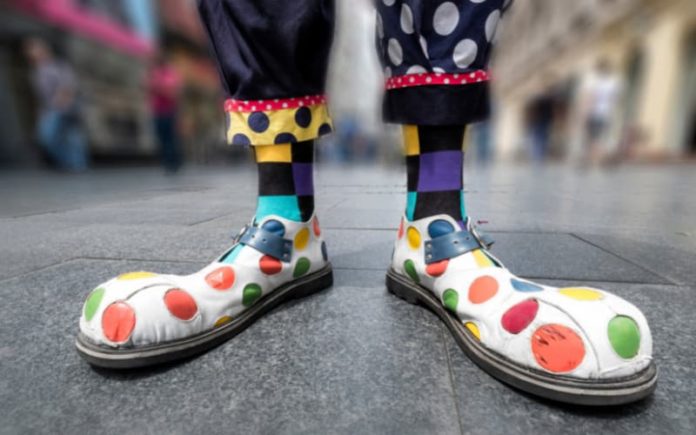
The time was Halloween night.
The year was 1921. The setting was a public streetcar located in Fort Worth, Texas.
Two boys, dressed in clown costumes, boarded the streetcar for purposes unknown. Once the streetcar resumed its journey, the boys began walking down the aisle toward the front. Suddenly, the streetcar stopped. One of the boys fell to the floor and skidded forward until he hit an upright iron rod in the front vestibule.
The midnight hour had scarcely passed before the boy’s mom filed a lawsuit against the company that owned and operated the streetcar. She sought damages of $2500 for her son and $750 for herself – translating into $50,000 in today’s dollars.
That was a lot of candy corn.
Case Details
Mom said the company was negligent when it ran the streetcar at such a high rate of speed – 20 mph – and then abruptly stopped. In her eyes, that was the nail in the coffin.
The case looked darker for the company than a black cat in a hunter’s moon.
Although the matter was grave, the company did not give up the ghost. It customized a costume rebuttal that the boy was contributorily negligent. It was clear as a crystal ball, they said, that the boy’s costume encumbered his freedom of movement, the boy’s clown mask had obscured his vision, and that he was engaged clownish antics.
But it was the boy’s shoes about which the company howled the loudest. Large, heavy, cumbersome shoes, two sizes too big. Maybe as big as a pumpkin. It was frightening how much the shoes had interfered with the boy’s freedom of movement.
In the company’s eyes, each item of apparel was a separate act of negligence by the boy. The case had turned into a witch hunt of apparel proportions for the jury.
Putting it together, they had brewed a potion of poisonous facts.
Day of The Trial
At trial, the company’s attorney asked the boy to try on the shoes. The boy refused. After a spirited debate between the attorneys, the Judge instructed the boy to put on the shoes only if he so desired. Sensing a trick, the boy again refused. He was treated to the sight of the offending souls being removed from the courtroom.
The ghost of O.J. Simpson looms large. Had the boy, older and bigger than the day he was injured, tried on the shoes, the company’s case most likely would have been buried.
The jack-a-lantern was lit, and the spell was cast. The case was turned over to the jury. They laid the matter to rest with their shocking verdict.
The Conclusion
Twenty miles an hour was not too fast for a public streetcar, but the sudden stop was downright scary. No question, there was negligence by the company, and it had caused the boy’s blood-curdling injuries.
The boy had not contributed to his injury by walking toward the front on the moving streetcar. The clown costume was not creepy (this was decades before Stephen King, remember). The mask had no effect (no political statement here).
The clown shoes were another matter. They were a menace. Were a wolf to wear such shoes, he could not hunt. Mummy’s arguments for her child could not overcome the ghoulish specter of those huge shoes failing to break the boy’s slide toward the ominously looming metal post.
A wicked result witch resulted in a clean-broom sweep for the company. Neal v Northern Texas Traction Co.







